Rise of Iran from middle of the pack to the top of Asia
TEHRAN (Iran) - After years of cultivating their golden generation and setting the foundations, Iran rose to be among the top teams of Asia in the late 2000s.
TEHRAN (Iran) - Heading Into the early 2000s, it was clear that the Chinese national team was dominating the FIBA Asia Cup scene. Of the thirteen editions of the competition before the turn of the millennium, China had won all but two titles in 1997 and 1985. They rarely lost and when they did, it was by a narrow margin.
China's reign looked far from its end with Yao Ming ready to step up into the spotlight. Meanwhile, on the other side of Asia, a contender was quietly getting prepared to overtake the Asia Cup throne.
Setting the Stage
"In 80s and 90s, the best performance of Iran's senior national team was placing fourth in Asia and the team used to be placed mostly among top 6-12 teams," said Ramin Tabatabaei, President of the Islamic Republic of Iran Basketball Federation (IRIBF).
Iran had their moments in their earlier FIBA Asia Cups, making eight appearances of the ten from 1980 to 2000. They weren't miserable, finishing in the Top 8 for all but one of their runs including a fourth-placed campaign in 1993. Still, it wasn't as if the West Asian powerhouses were striking fear in their East Asian counterparts - yet.
But the tides were turning, starting from the youth national team before trickling over to the senior national team.
After never finishing higher than fifth in the FIBA U18 Asian Championship, Iran made a historic trip to the championship game in 2002. The youngsters followed that up by winning it all in the next edition of the competition in 2004.
The senior national team wasn't able to rise to that level of success just yet, but the promising signs were there.
In the very first game of FIBA Asia Cup 2003, they beat Chinese Taipei 83-75, a team that they had struggled against in the 90s. Iran's youngsters were getting their chances and putting it to good use. Samad Nikkhahbahrami was already a double-digit scoring threat. Mahdi Kamrani and Hamed Afagh were carving in their own roles early on as well. All three were under 21 at that time.
"From 2003, a new generation was introduced to the basketball world," Tabatabaei explained. "With the talent identification programs and great support, they could achieve more. Also with good efforts and financial supports to continue the program, youth teams were formed and could both provide support for the seniors and attract enough attention and support from IRIBF to improve."
In 2005, Iran continued to reload. They brought along youth national team star Hamed Haddadi and the elder Aidin Nikkahbahrami into the mix. The 20-year-old Haddadi gave them massive size in the paint with his 2.18M (7ft 2in) frame. He was still young and scored only 6.6 points per game in 2005, but the pieces were in place for Iran's future.
The stage was set.
The Takeover
Iran were riding high on confidence going into the FIBA Asia Cup in Tokushima.
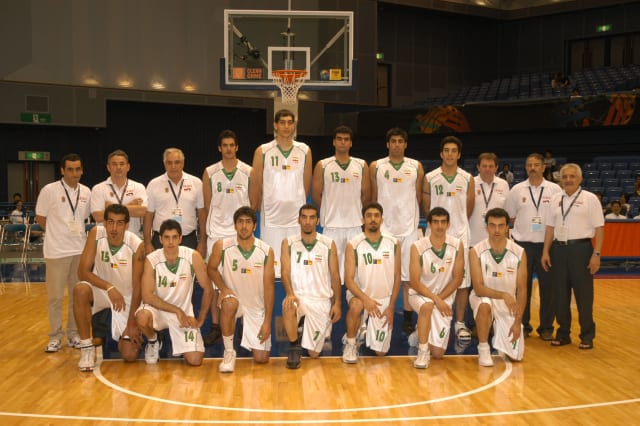
They had just won the bronze medal at the 2006 Asian Games, their first medal in over 50 years. Kamrani, Afagh, Haddadi, and the Nikkhahbahrami brothers were now experienced. They were bringing up some young studs from the FIBA U19 World Championship 2003 squad like Oshin Sahakian and Amir Amini. Serbian head coach Rajko Toroman had been brought in to lead this team to the promised land.
Even though they had been placed in a tough group with the Philippines, Jordan, and China, it didn't matter. Iran swept through the group and was even able to spare some bench time for their stars. After another win against Chinese Taipei to start the next stage, Iran were set to face a familiar foe.
Qatar had played against Iran in the past two Asia Cups. Not only did the Qataris won both contests, they also kept Iran out of contention for making it to the Semi-Finals both times.
With Haddadi in foul trouble, the Nikkhahbahrami brothers combined for 39 points and 8 three-pointers to help Iran get over that hump and clinch only their second semi-finals appearance ever at that time.
Iran went through Kazakhstan in the Semis to face Lebanon for the title.
It was Lebanon's third trip to the FIBA Asia Cup Finals in this decade. Brian Beshara, Rony Fahed, and Fadi El Khatib were all at the peak of their powers while Joe Vogel was a star on the team. They were hungry for a chance to finally win it all in 2007.
Unfortunately for them, they ran into Iran and Hamed Haddadi.
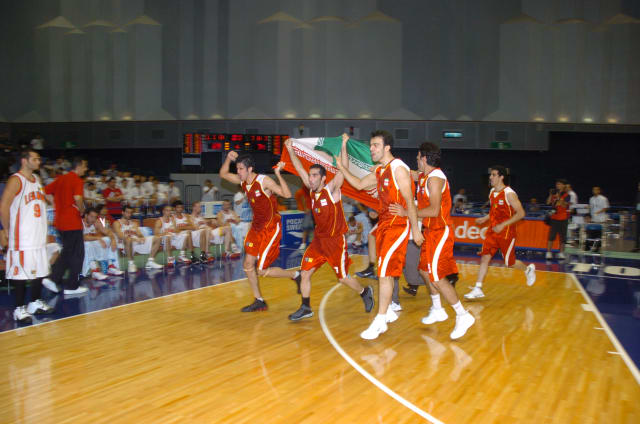
In what was later noted by Lebanon head coach Dragan Raca as the "greatest game of [Haddadi's] career", the eventual MVP dropped 31 points and 10 rebounds including a halftime buzzer-beating halfcourt shot. Iran won the game and the title, 74-69.
For the first time ever, the FIBA Asia Cup was not going to stay in the Eastern parts of Asia. Iran had successfully overtaken the throne.
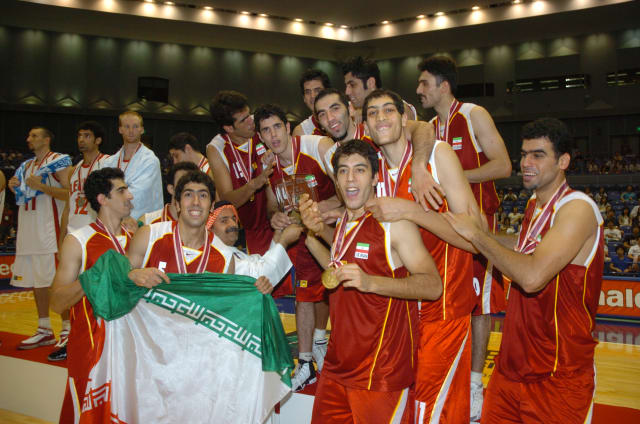
Just the Beginning
Iran's arrival as the team to beat in Asia was swift and the impact was instant.
Winning the continental crown meant a trip to the Summer Olympics in 2008, a first for Iran in 60 years. Even though they didn't get a win in Beijing, being on the global stage raised the basketball scene up to another level in the country.
"The talent of Iranian players has come to be known after our team secured a berth as one of the 12 teams to play in the Olympic Games," Haddadi said.
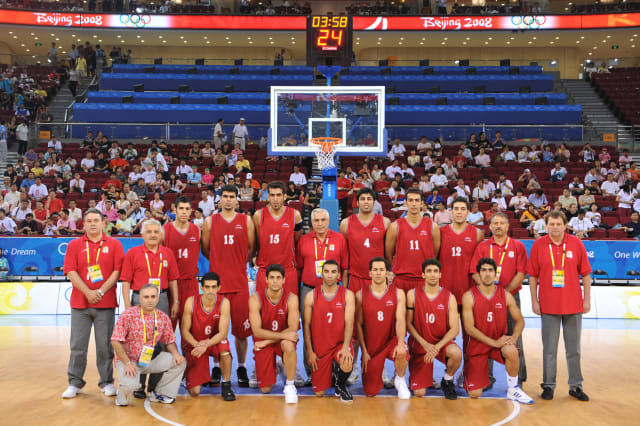
Haddadi garnered enough attention to get an opportunity to play in the NBA, another achievement for his resume as the first Iranian to ever play in the NBA. Samad Nikkhahbahrami also got his opportunity to play professionally in France.
As if to erase all doubt of how good they were, Iran marched into China for FIBA Asia Cup 2009 and won it all once again. Even though they had to go up against a full force host team led by Wang Zhizhi and Yi Jianlian, it didn't matter. Iran won their second consecutive title in a convincing 18-point win that saw Haddadi claim the MVP award for a second straight time.
Iran entered the 2000s a slight step behind the elites of Asia. Now they were heading into the 2010s with a firm step ahead of the pack.
The Future
With the core of Iran's golden generation in their prime, they continued to stay in the upper echelon of Asia Cup teams.
They won the Asia Cup again in 2013, made it to the Semis in 2015, and fought their way to the Finals in 2017. These talented players found their ways to interesting opportunities in foreign countries from China to the Philippines to Lebanon. It truly was a generation that experienced much success and inspired the next generation for Iran.
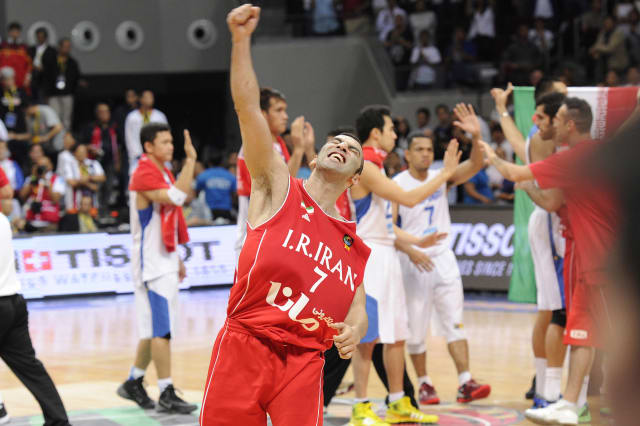
Talented young players continue to feed the pipeline. Guys like Arsalan Kazemi, who was the first Iranian player drafted in the NBA, or Behnam Yakhchali have been carefully taking up larger roles in the national team. The talent pool is also getting deeper with Iran reaching out to players like Navid Niktash, Mike Rostampour, and Aaron Gerramipoor who were groomed in foreign locations.
A structured domestic league system has helped discover some of these talents over the years from all age groups over the years.
"Having a strong domestic league in three levels - Professional, 1 and 2 - with many foreign players and highly knowledgable coaches as well as teaching and educational programs for domestic coaches have all greatly contributed to a more dynamic league and discovering and flourishing the potential of elite players," Tabatabaei said. "Not only leagues but also national competitions have kept basketball players active throughout the year."
"The same pattern for the leagues have applied to running leagues for other age ranges such as U18 and U16 professional leagues which direct these talents in the right path of progression."
The main key to Iran's rise has been their dedication to identifying talents at a young age. It is something that they have done well and are committed to continue doing.
"IRIBF has tried to first identify and then use the best practices, skills and experiences in modern basketball, also to advance the league and attract sponsors, and with increasing number of more than 50 teams in U18 and U16 leagues, increase the popularity of basketball in the country and also help boost up the fundamental skills in these age categories," explained Tabatabaei.
"Despite the limitations, sanctions and weak infrastructures in basketball which may have created issues to run all that we desire, we have tried to use the resources in the best possible way. We have great players in our U18 and U16 teams who have admirable achievements in Asian youth competitions. They have participated in many camps and international competitions and ranked among the top performers."
This rise to the top of Asia started with legends like Hamed Haddadi and Samad Nikkahbahrami leading the way. It might be nearly impossible to replace those two on the national team, but IRIBF are committed to develop more players who can be legendary in their own rights to keep the tradition going.
"Obviously, there are super talented people in some eras who can go the distance and become legends like Samad and Hamed," Tabatabaei said. "They will stay in the history of the country's basketball forever and may not be easy to replace. What IRIBF has always tried to do was to run country-wide talent identification programs to find the best talented players. By using the experience of these legends along with their best coaches and trainers, we train the younger generations to learn from the bests players alongside the best in order to become the best."
"The network of talent identification has tried to work with full potential and lead as many talented players into these networks. Not to replace the legends, but to create more and more like them in different generations."
Iran have had a glorious run to be among the cream of the crop in Asia. From what we've seen, it most likely they aren't ready to let go of that title yet with a bright future up ahead.
FIBA